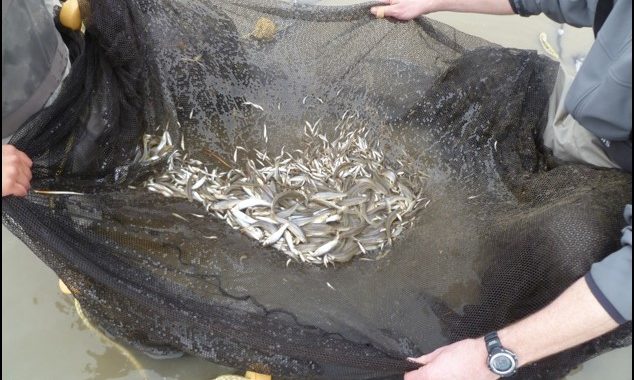Thesis title: Improving our ability to assess the impacts of hydrologic alteration on stream fishes: An interdisciplinary approach to assess the Threatened Western Silvery Minnow Hybognathus argyritis in Canada
Author: Kenton Neufeld
Abstract
Human induced hydrologic alteration is ubiquitous in North American riverscapes. These alterations have been shown to impact fishes by modifying habitats, influencing movement patterns and driving changes in community structure. Understanding these impacts is an essential first step for the conservation of fish in these systems. We use Western Silvery Minnow Hybognathus argyritis and the Milk River of southern Alberta as a model system to develop and apply an interdisciplinary approach to assess the impacts of hydrologic alteration on capture efficiency and habitat suitability of stream fishes. The capture efficiency of sampling gear is a key component of many fish research programs, and understanding the link between hydrology and capture efficiency is critical to accurately assessing the impacts of hydrologic alterations on fish. We measured seine net capture efficiency in the Milk River, and investigated the effects of flow, species, and habitat variables on capture efficiency using mixed effects models. Flow state was an important driver of capture efficiency, which increased ~5 % during augmented flow compared to natural flow. Habitat suitability assessments are commonly used to determine the impacts of hydrologic alteration on fishes, but often rely on poorly understood relationships between fish and their habitat. We used the swimming performance of Western Silvery Minnow to measure the cost of movement between habitat patches in the Milk River and incorporated this cost into a graph theoretic metric of habitat suitability (Equivalent Connected Area). Compared to augmented flow, the proportion of suitable area was ~ 475 % higher during natural flow, the mean cost of movement between habitat patches was ~ 13 % higher and Equivalent Connected Area increased ~ 0.119 (95% C.I. 0.109-0.130). By including flow as a variable in modelling capture efficiency and swimming performance as a mechanism defining habitat suitability, we show the utility and benefits of taking an interdisciplinary approach to assessing the impacts of hydrologic alteration on stream fishes.

